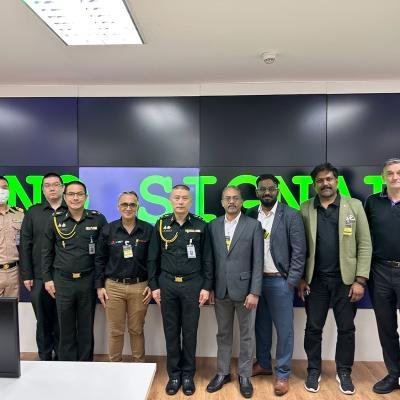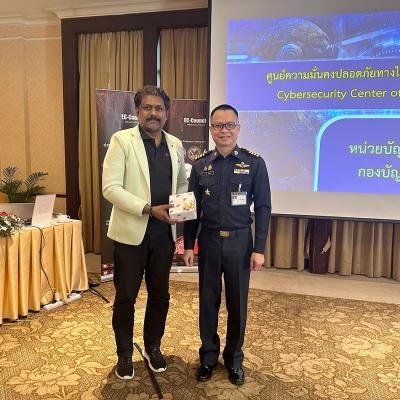In recent years, the advent of autonomous vehicles has sparked a paradigm shift in the automotive industry, promising revolutionary advancements in transportation efficiency, convenience, and safety. As these cutting-edge machines become increasingly integrated into our daily lives, it is essential to address the crucial issue of autonomous vehicle security. With the potential for cyber threats and vulnerabilities to compromise the safety of passengers and the integrity of the vehicles themselves, ensuring robust security measures is of paramount importance.
The concept of autonomous vehicles revolves around the idea of self-driving cars capable of navigating roads without human intervention. These vehicles rely on a complex network of sensors, cameras, artificial intelligence algorithms, and communication systems to interpret and respond to their surroundings. While this technology brings remarkable benefits, such as reducing accidents caused by human error and optimizing traffic flow, it also introduces new challenges in terms of security.
The unique nature of autonomous vehicles gives rise to distinct security concerns. Unlike traditional vehicles, autonomous cars are highly connected, relying on continuous communication with various external entities, such as GPS satellites, traffic control systems, and other vehicles on the road. This increased connectivity expands the attack surface, leaving them vulnerable to potential cyber threats and unauthorized access. Moreover, the vast amount of data generated by autonomous vehicles, including geolocation, sensor readings, and vehicle performance, presents attractive targets for malicious actors seeking to exploit or manipulate this information.
The potential risks and vulnerabilities associated with autonomous vehicle security are multifaceted. External threats encompass a range of possibilities, including hacking attempts to gain unauthorized access to the vehicle's systems, compromising data privacy, or manipulating GPS signals to misdirect the vehicle's navigation. Internally, the vehicles face risks from software and firmware vulnerabilities, insider attacks, and physical tampering. Addressing these threats requires a comprehensive approach to security.
To safeguard autonomous vehicles, it is imperative to implement key security measures. Secure software development practices, such as employing secure coding techniques, conducting rigorous code reviews, and comprehensive testing, play a pivotal role in preventing vulnerabilities. Robust authentication and authorization mechanisms, including multi-factor authentication and role-based access control, ensure that only authorized individuals can interact with the vehicle's systems. Data encryption and privacy protection techniques, such as end-to-end encryption and anonymization, safeguard sensitive information from unauthorized access.
Intrusion detection and prevention systems are vital components of autonomous vehicle security. Real-time monitoring, coupled with advanced anomaly detection algorithms, allows for the early detection of potential security breaches, while network segmentation limits the potential impact of successful attacks. Additionally, over-the-air updates and effective patch management are crucial for promptly addressing newly identified vulnerabilities and ensuring that the vehicles remain protected against emerging threats.
The regulatory framework and industry initiatives also play a significant role in enhancing autonomous vehicle security. Government regulations and standards set the groundwork for security requirements and guidelines that manufacturers must adhere to. Collaborative efforts between automotive manufacturers and security experts foster knowledge sharing and best practices in securing autonomous vehicles. Furthermore, the establishment of information sharing platforms and vulnerability disclosure programs encourages responsible reporting of security flaws and facilitates timely remediation.
Looking to the future, the landscape of autonomous vehicle security will continue to evolve. As technology advances, new threats and vulnerabilities will emerge, requiring constant adaptation and innovation in security practices. Ethical considerations surrounding the use of autonomous vehicles and their security also need to be addressed, ensuring that safety and privacy remain at the forefront. Investing in training and education for security professionals to develop specialized skills in autonomous vehicle security is essential for staying ahead of emerging threats.
Understanding Autonomous Vehicle Security:
Autonomous vehicles, also referred to as self-driving cars or driverless cars, are vehicles that operate and navigate without direct human control. These vehicles utilize advanced technologies such as sensors, artificial intelligence, machine learning algorithms, and communication systems to perceive their environment, make decisions, and navigate routes. The security of autonomous vehicles is of utmost importance due to several factors. Firstly, ensuring the safety of passengers and other road users is paramount, as any compromise in the security of autonomous vehicles can lead to accidents or injuries. Secondly, autonomous vehicles handle a significant amount of sensitive data, including personal information and geolocation data. Protecting this data is crucial to prevent privacy breaches and unauthorized access. Lastly, the potential for malicious actors to manipulate or sabotage autonomous vehicles raises concerns related to theft, terrorism, and economic disruption. Securing autonomous vehicles presents unique challenges due to the complexity and interconnectedness of their systems. The reliance on various components such as sensors, cameras, GPS systems, and communication networks necessitates a holistic approach to security. Additionally, the use of software and AI algorithms introduces vulnerabilities that can be exploited by hackers. To address these challenges effectively, a comprehensive understanding of the potential risks and vulnerabilities associated with autonomous vehicle systems is essential. By identifying and mitigating these risks, we can establish a secure foundation for the widespread adoption of autonomous vehicles and ensure their safe integration into our transportation ecosystem.
Potential Risks and Vulnerabilities:
External Threats:
Autonomous vehicles are exposed to a range of external threats that can compromise their security and functionality.
- Hacking and Unauthorized Access: Malicious actors may attempt to gain unauthorized access to the vehicle's systems, allowing them to control or manipulate its operations. This can lead to dangerous situations such as sudden acceleration, braking, or steering, putting passengers and other road users at risk.
- Data Privacy Breaches: The vast amount of data generated by autonomous vehicles, including personal information and geolocation data, makes them attractive targets for data breaches. Unauthorized access to this data can result in privacy violations, identity theft, or targeted attacks.
- GPS Spoofing and Tampering: GPS signals, which are essential for autonomous vehicles' navigation, can be spoofed or tampered with, leading to incorrect positioning and navigation. This can result in the vehicle taking wrong routes or becoming vulnerable to malicious actors diverting it to unsafe locations.
Internal Threats:
Internal vulnerabilities within the autonomous vehicle systems can also pose significant risks to their security.
- Software and Firmware Vulnerabilities: Autonomous vehicles heavily rely on software and firmware to control their operations. However, these components can contain vulnerabilities that attackers can exploit to gain control over the vehicle or disrupt its normal functioning.
- Malicious Insider Attacks: Insiders with privileged access, such as employees or contractors, may intentionally misuse their privileges to compromise the security of autonomous vehicles. This could involve unauthorized access, unauthorized modifications to software or systems, or theft of sensitive data.
- Physical Attacks: Autonomous vehicles can be physically tampered with, either by unauthorized individuals gaining physical access to the vehicle or by intentional damage to critical components. Physical attacks can result in the manipulation or disablement of safety features, affecting the vehicle's performance and endangering occupants.
Understanding these potential risks and vulnerabilities is crucial for developing robust security measures that address each aspect effectively. By identifying and mitigating these threats, autonomous vehicle manufacturers and stakeholders can ensure the safety and integrity of these advanced vehicles, instilling trust among users and facilitating the widespread adoption of autonomous transportation systems.
Key Security Measures for Autonomous Vehicles:
To ensure the robust security of autonomous vehicles and mitigate potential risks and vulnerabilities, a comprehensive set of security measures should be implemented. By adopting these measures, manufacturers and stakeholders can establish a strong foundation for the safety and integrity of autonomous vehicles.
Secure Software Development:
Secure software development practices are crucial in minimizing vulnerabilities in autonomous vehicle systems.
- Secure Coding Practices: Following industry best practices and guidelines to develop software with a focus on security. This includes avoiding common programming errors, using secure coding techniques, and adhering to coding standards.
- Code Review and Testing: Conducting thorough code reviews and rigorous testing processes to identify and address security flaws before the software is deployed. This involves static code analysis, dynamic testing, and vulnerability scanning to detect potential weaknesses.
- Robust Authentication and Authorization:
Implementing strong authentication and authorization mechanisms ensures that only authorized individuals can access and interact with autonomous vehicle systems.
- Multi-Factor Authentication: Requiring multiple factors, such as passwords, biometrics, or hardware tokens, to authenticate users and verify their identities before granting access to critical vehicle functions.
- Role-Based Access Control (RBAC): Implementing RBAC to assign specific access privileges to different roles or users within the autonomous vehicle system. This ensures that each user has the necessary permissions for their designated tasks and prevents unauthorized access.
- Data Encryption and Privacy Protection:
Protecting sensitive data generated and handled by autonomous vehicles is essential to maintain privacy and prevent unauthorized access.
- End-to-End Encryption: Implementing strong encryption mechanisms to protect data both at rest and in transit. This ensures that data remains secure even if it is intercepted or accessed by unauthorized individuals.
- Anonymization Techniques: Employing anonymization methods to dissociate personal information from specific individuals, preserving privacy while still allowing data analysis and utilization for vehicle operations or research purposes.
- Intrusion Detection and Prevention Systems:
Detecting and mitigating potential security breaches in real-time is critical for safeguarding autonomous vehicles against external attacks and unauthorized access.
- Real-time Monitoring and Alerting: Deploying sophisticated monitoring systems that continuously monitor the vehicle's network, sensors, and communication channels. Any suspicious activities or anomalies are detected in real-time, triggering immediate alerts for investigation and response.
- Network Segmentation: Dividing the vehicle's network into logical segments to isolate critical systems and components from less secure or potentially compromised parts. This helps contain any potential breaches and prevents lateral movement of attackers within the vehicle's systems.
- Over-the-Air Updates and Patch Management:
Maintaining the security of autonomous vehicles requires timely application of software updates and security patches to address newly identified vulnerabilities.
- Secure Update Mechanisms: Implementing secure protocols and mechanisms for over-the-air updates to ensure that only authorized and authenticated updates are accepted and installed on the vehicle's systems.
- Timely Patch Deployment: Establishing efficient processes for identifying and addressing software vulnerabilities, promptly releasing and deploying patches to autonomous vehicles to eliminate known risks.
By implementing these comprehensive security measures, autonomous vehicle manufacturers and stakeholders can significantly enhance the security posture of these advanced vehicles. However, it is crucial to adopt a proactive and iterative approach to security, continually assessing and improving the security measures as new threats and vulnerabilities emerge. Regular security audits, vulnerability assessments, and penetration testing are essential components of a robust security strategy, ensuring the ongoing protection and resilience of autonomous vehicles in the face of evolving cyber threats.
Regulatory Framework and Industry Initiatives:
Ensuring the security of autonomous vehicles goes beyond technical measures alone. It requires the establishment of a comprehensive regulatory framework and collaborative efforts within the industry. These initiatives play a crucial role in setting standards, guidelines, and best practices that govern the development, deployment, and operation of autonomous vehicles, while promoting cooperation and addressing emerging security challenges.
Government Regulations:
- Cybersecurity Standards: Government regulatory bodies collaborate with industry experts, researchers, and policymakers to define cybersecurity standards specific to autonomous vehicles. These standards encompass various aspects, including secure communication protocols, encryption requirements, secure software development practices, and vulnerability management. Compliance with these standards ensures that autonomous vehicle systems are built with a strong security foundation.
- Data Protection and Privacy Regulations: Governments establish regulations that address the collection, storage, and usage of data by autonomous vehicles. These regulations focus on safeguarding personal information, ensuring consent and transparency in data handling, and establishing guidelines for data anonymization, storage limitations, and data breach notifications. By enforcing data protection and privacy regulations, governments aim to protect the rights and privacy of individuals involved in autonomous vehicle operations.
Collaborative Industry Initiatives:
- Information Sharing Platforms: Industry initiatives facilitate information sharing among autonomous vehicle manufacturers, security experts, researchers, and other stakeholders. These platforms serve as forums for sharing insights, vulnerabilities, and security incidents. By collaborating and exchanging information, the industry can stay informed about emerging threats and vulnerabilities, enabling timely identification and mitigation of potential risks.
- Vulnerability Disclosure Programs: Autonomous vehicle manufacturers establish vulnerability disclosure programs to encourage responsible reporting of security vulnerabilities. Researchers and ethical hackers can contribute by identifying and reporting vulnerabilities to manufacturers. This collaborative approach ensures that vulnerabilities are addressed promptly, reducing the likelihood of exploitation and enhancing the overall security of autonomous vehicles.
Ethical Considerations:
- Ethical Guidelines: Regulatory bodies and industry initiatives address the ethical implications of autonomous vehicle security. They establish guidelines that emphasize the responsible use of autonomous vehicles, taking into account the safety and well-being of passengers, addressing potential biases in decision-making algorithms, and ensuring transparency in data collection and usage. Ethical guidelines help shape the development and operation of autonomous vehicles in a manner that aligns with societal values and expectations.
- Public Awareness and Education: Efforts are made to raise public awareness and educate consumers, policymakers, and other stakeholders about autonomous vehicle security, ethical considerations, and privacy concerns. Public awareness campaigns, training programs, and educational initiatives help enhance understanding and promote responsible usage of autonomous vehicles. By fostering a knowledgeable and informed public, trust in autonomous vehicle technology can be fostered.
By combining a robust regulatory framework with collaborative industry initiatives, the security of autonomous vehicles can be significantly enhanced. These efforts ensure that autonomous vehicles are developed, deployed, and operated with a strong focus on safety, privacy, and ethical considerations. Regulatory compliance and industry collaboration are essential in building trust among users and promoting the widespread acceptance and adoption of autonomous vehicles as a secure and reliable mode of transportation.
Future Challenges and Opportunities:
As autonomous vehicles continue to evolve and become more prevalent, several challenges and opportunities lie ahead in the realm of their security. Addressing these challenges and capitalizing on the opportunities will be crucial for ensuring the long-term success and safety of autonomous transportation systems.
- Evolving Cyber Threat Landscape:
- Sophisticated Cyber Attacks: As autonomous vehicles become more interconnected and reliant on communication networks, the risk of sophisticated cyber attacks increases. Attackers may leverage advanced techniques to exploit vulnerabilities in autonomous vehicle systems, necessitating ongoing research and innovation in cybersecurity.
- Artificial Intelligence (AI) Attacks: The use of AI in autonomous vehicles introduces new security considerations. Adversarial attacks aimed at manipulating AI algorithms or deceiving sensor inputs pose significant challenges. Developing robust defenses against AI-based attacks and exploring methods to enhance the resilience of AI systems will be crucial.
Regulatory and Legal Frameworks:
- Complex Regulatory Environment: The rapid development of autonomous vehicles requires agile and adaptable regulatory frameworks. Governments and regulatory bodies must keep pace with emerging technologies, addressing legal, ethical, and liability issues associated with autonomous vehicles' security and operation.
- International Standardization: Harmonizing regulations and standards at the international level will be vital to enable seamless interoperability and ensure consistent security practices across borders. Collaborative efforts among nations and industry stakeholders will be essential to establish cohesive global standards.
Privacy and Data Protection:
- Balancing Data Usage and Privacy: Autonomous vehicles generate vast amounts of data, raising concerns about data privacy and how this information is collected, stored, and utilized. Striking a balance between utilizing data for enhancing safety and efficiency while preserving privacy rights will be an ongoing challenge.
- Secure Data Sharing: Effective mechanisms for secure data sharing among autonomous vehicles, infrastructure, and stakeholders will be crucial for enabling cooperative functionalities and improving overall transportation efficiency. Establishing robust data sharing frameworks that protect privacy and prevent unauthorized access will be a key focus.
Collaboration and Education:
- Industry Collaboration: Continued collaboration among autonomous vehicle manufacturers, researchers, and security experts is vital to share knowledge, best practices, and threat intelligence. Collaborative initiatives can help address emerging security challenges collectively and foster a culture of information sharing.
- Education and Awareness: Promoting cybersecurity education and awareness among stakeholders, including manufacturers, operators, and end-users, is crucial. Providing training programs and resources to enhance understanding of autonomous vehicle security risks and best practices will be essential for fostering a security-conscious ecosystem.
Integration with Existing Infrastructure:
- Legacy System Integration: Autonomous vehicles need to seamlessly integrate with existing transportation infrastructure and legacy systems. Ensuring secure communication and compatibility with infrastructure components, such as traffic control systems and smart city infrastructure, will be a challenge that requires careful planning and collaboration.
- Resilience to External Factors: Autonomous vehicles must be designed to withstand external factors such as natural disasters, extreme weather conditions, and malicious attempts to disrupt transportation systems. Building resilient and adaptive autonomous vehicle systems capable of operating under adverse conditions will be crucial.
Addressing these challenges presents significant opportunities for innovation and advancement in autonomous vehicle security:
- Advanced Threat Detection: Developing sophisticated threat detection mechanisms, leveraging machine learning and AI, can enhance the ability to detect and respond to emerging cyber threats in real-time, minimizing the risk of successful attacks.
- Secure Communication Technologies: Advancements in secure communication technologies, such as quantum-resistant encryption and blockchain-based solutions, can bolster the security of autonomous vehicle communication networks, ensuring the integrity and confidentiality of data exchanged.
- Ethical Considerations in AI: Integrating ethical considerations into AI algorithms and decision-making processes can promote fairness, transparency, and accountability in autonomous vehicle operations, enhancing public trust and acceptance.
- International Collaboration: Collaboration among governments, regulatory bodies, and industry stakeholders on a global scale can lead to the development of unified standards and regulations, facilitating interoperability and security across autonomous vehicle ecosystems.
- Resilient Infrastructure: Investments in robust and resilient transportation infrastructure, including secure communication networks, roadside sensors, and vehicle-to-infrastructure systems, can support the safe and secure operation of autonomous vehicles.
By proactively addressing these challenges and leveraging the opportunities, the future of autonomous vehicle security can be shaped in a manner that prioritizes safety, privacy, and reliability, leading to a transformative and secure transportation landscape.
Case studies and examples:
To further illustrate the importance of autonomous vehicle security and highlight real-world scenarios, let's explore some notable case studies and examples:
- Tesla Autopilot System: Tesla's Autopilot system, a prominent example of autonomous vehicle technology, has faced security challenges and vulnerabilities in the past. Researchers have demonstrated potential exploits, including tricking the system with small modifications to road signs or confusing the vehicle's perception system with adversarial attacks. These instances highlight the need for robust security measures to ensure the system's integrity and protect against potential malicious manipulation.
- Waymo's Safety and Security Initiatives: Waymo, a leading autonomous vehicle company, has taken significant steps to address safety and security concerns. They have conducted extensive testing, amassing millions of autonomous driving miles to refine their technology. Waymo has also collaborated with external security researchers through their Vulnerability Reward Program, inviting them to identify and report potential security vulnerabilities. Such initiatives demonstrate the importance of engaging the wider security community to strengthen autonomous vehicle systems.
- Government Regulations and Testing Programs: To ensure the safety and security of autonomous vehicles, governments around the world have implemented regulatory frameworks and testing programs. For instance, the U.S. National Highway Traffic Safety Administration (NHTSA) has released guidelines and regulations for autonomous vehicles, emphasizing cybersecurity practices and data privacy. Additionally, organizations like the European New Car Assessment Programme (Euro NCAP) have introduced assessment protocols that include evaluating the cybersecurity capabilities of autonomous vehicles.
- Vulnerability Discoveries and Disclosure: Ethical hackers and security researchers have played a vital role in identifying and disclosing vulnerabilities in autonomous vehicles. For example, researchers have discovered vulnerabilities in vehicle infotainment systems that could potentially be exploited to gain unauthorized access or manipulate vehicle functions. Responsible disclosure of these vulnerabilities to manufacturers allows for timely remediation and reinforces the importance of collaboration between security experts and industry stakeholders.
- Public Demonstrations and Security Challenges: Several public demonstrations and challenges have been conducted to assess the security of autonomous vehicles. One notable example is the DEF CON Car Hacking Village, an event that invites security researchers to identify vulnerabilities in vehicles' electronic systems. These demonstrations highlight the ongoing need for robust security measures and continuous evaluation of autonomous vehicle technologies to address emerging threats effectively.
Conclusion:
As the world embraces the revolutionary technology of autonomous vehicles, it is imperative to prioritize the security of these advanced transportation systems. The future of autonomous vehicle security is filled with both challenges and opportunities, requiring a collaborative and proactive approach from industry stakeholders, regulatory bodies, and the wider cybersecurity community.
By understanding the potential risks and vulnerabilities associated with autonomous vehicles, manufacturers can implement key security measures to protect against cyber threats. Secure software development practices, robust authentication and authorization mechanisms, data encryption, and intrusion detection systems are vital components of a comprehensive security strategy.
Furthermore, the establishment of a strong regulatory framework and industry initiatives is crucial for ensuring the safety, privacy, and ethical use of autonomous vehicles. Governments must develop agile regulations that keep pace with technological advancements while addressing legal and liability concerns. Collaborative industry initiatives facilitate knowledge sharing, vulnerability disclosure, and the development of best practices, promoting a collective approach to addressing security challenges.
As the field of autonomous vehicle security continues to evolve, it is essential to anticipate future challenges and capitalize on opportunities for innovation. Advanced threat detection mechanisms, secure communication technologies, ethical considerations in AI, international collaboration, and resilient infrastructure are key areas where advancements can be made to enhance autonomous vehicle security.
Ultimately, the success of autonomous vehicles hinges on building trust among users and stakeholders. By prioritizing security, privacy, and ethical considerations, the industry can foster a secure and reliable autonomous transportation ecosystem that revolutionizes the way we travel.
As the journey toward a future of autonomous vehicles unfolds, the commitment to digiALERT, a state of constant vigilance and proactive security measures, will be essential. With a collective effort, we can shape a future where autonomous vehicles not only bring convenience and efficiency but also prioritize the safety and security of passengers and the broader transportation infrastructure.







